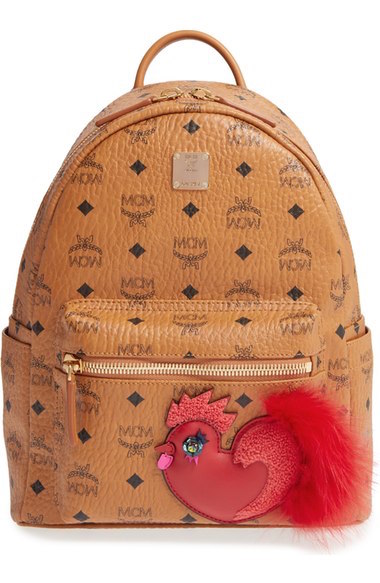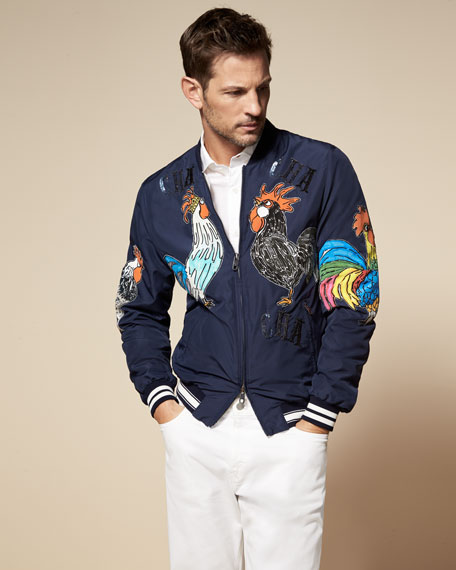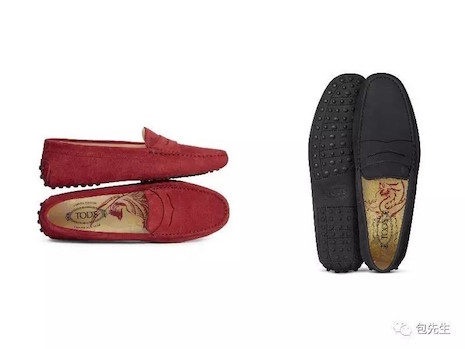By Yiling Pan
Since Chinese consumers have become one of the most important forces of global luxury consumption, special zodiac-themed items in celebration of China’s Lunar New Year have been produced by more luxury brands every year. Cashing in on demand for holiday gifts traditionally given to family and friends, these brands hope that New Year-themed products will be seen as a way for wealthy Chinese shoppers assert their social status.
However, with Chinese luxury buyers becoming increasingly sophisticated as more members of the younger and well-educated generation enter the market, the tastes and needs of many consumers have changed. As a result, we’ve seen rising criticisms and discontent with the New Year designs in the past two years from Chinese media and online commentators. While combining Chinese elements with luxury design can be an effective way of marketing toward luxury buyers during the country’s most shopping-frenzied season, brands must carefully consider what high-end Chinese consumers want to prevent their efforts from going astray.
With the year of the rooster just around the corner, high-end brands have released their 2017 products celebrating this year’s zodiac sign. Like what happened during the year of the monkey, some of the items have become the subject of online criticism or sarcasm from China’s mainstream media, social media influencers and regular Internet users. In order to see what makes Chinese consumers prefer some New Year-themed products to others and the main underlying reasons for bad reviews, Jing Daily took a close look at online discussions by Chinese Internet users.
First of all, Chinese customers don’t like it when they feel designers misinterpret or misunderstand Chinese culture. Such concern was expressed earlier this year when lingerie brand Victoria’s Secret sent dragon-decorated supermodels to the runway during its annual show. Another example is Etro’s Chinese New Year-themed scarf, which has a phoenix pattern on it. Mr. Bags, China’s handbag guru as well as a famous fashion blogger, questioned the original intent of this design in a WeChat post. Commenting on the choice to use the phoenix on a shawl to celebrate the holiday during the year of the rooster, he commented that he was not sure whether the brand chose it because they designers could not tell the difference between a phoenix and a rooster. Chinese netizens also complained about some designers’ lack of creativity in designing New Year-themed products.
 Etro opted for a phoenix shawl to celebrate the year of the rooster, confusing some commenters
Etro opted for a phoenix shawl to celebrate the year of the rooster, confusing some commenters
When it comes to making cultural references to the Lunar New Year, they hoped to see richer and more authentic Chinese elements rather than overused ones. One user commented on MCM’s rooster-embroidered handbag, stating, “red, gold, and zodiac signs are symbols of Chinese New Year, but why do they [luxury brands] believe we want to carry a bag with a zodiac animal all year round?” Indeed, Chinese culture is reserved and implicit, so as one of the most important symbols of the Lunar New Year, a zodiac animal is not a thing that appears frequently in people’s daily life.
 MCM released a special-edition collection of bags with roosters for Chinese New Year
MCM released a special-edition collection of bags with roosters for Chinese New Year
Chinese people will not spend money on these products if some cultural symbols do not fit with the public image of the brand. For some brands that are traditionally not familiar with Chinese culture, it is hard for their designers to naturally and elegantly integrate authentic Chinese elements into the essence of their design. One prime example is Longchamp’s rooster handbag, which is featured in red and gold with an embroidered rooster. But the product seemed to attract an especially high number of negative comments and a low number of positive ones from Chinese netizens on Weibo. An online commentator said, “Simply adding an image of the rooster on a red-and-golden bag just has no sense of aesthetics.” Another user who claimed herself to be a loyal customer of the brand said she could not believe Longchamp made it.
 Longchamp’s special bag for the year of the rooster.
Longchamp’s special bag for the year of the rooster.
Chinese consumers will not buy these products if they feel the designs look like counterfeits (shanzhai). Young luxury buyers, in particular, can be scared away by the thought that these items can also be purchased on platforms such as Alibaba’s Taobao at a much cheaper price. The New Year-themed items from Calvin Klein stand out as a typical example of a brand accused of being guilty of this type of mistake. One commentator said on Weibo, “If I spend that much amount of money on it, why would I want to buy something that looks like a fake?” Another user said, “The design is so tacky. CK might still think Chinese consumers are as tasteless as they were like 20 years ago, but the young generation is truly the opposite!”
 Calvin Klein’s underwear for Chinese New Year
Calvin Klein’s underwear for Chinese New Year
Similarly, Dolce & Gabbana’s rooster jacket also attracted controversial reviews. A Weibo user joked that the item is “the next best-selling piece on Taobao,” referring to the fact that the best-sellers on Taobao end up with hundreds and thousands of online stores stealing the design and selling counterfeits.
 A rooster jacket by Dolce & Gabbana
A rooster jacket by Dolce & Gabbana
Not all online reactions are negative and commenters expressed differing opinions on brands’ items. Mr. Bags believed many luxury brands have already made some progress compared with their designs in previous years. He praised this year’s New Year collections by Gucci, Tod’s, Dior and Chopard, among other luxury brands in his post on WeChat. More than 100,000 WeChat users read that article, and a lot of readers echoed the view that this year’s Dior bracelet was much better than last year’s monkey-themed one.
 Mr. Bags said Dior’s rooster bracelet is an improvement from last year’s similar style for the year of the monkey
Mr. Bags said Dior’s rooster bracelet is an improvement from last year’s similar style for the year of the monkey
 Tod’s understated year of the rooster loafers with the zodiac symbol hidden in the sole received praise online
Tod’s understated year of the rooster loafers with the zodiac symbol hidden in the sole received praise online
One unexpected success story came from Louis Vuitton, whose bird-adorned wallet collection has become very popular among Chinese customers. Even though the brand did not specifically promote this production line for Chinese New Year and the bird looks more like an owl, many Internet users said the products looked perfect for the upcoming gift-exchanging season. One user commented on Weibo, “My girlfriend asked me to buy one for her because she really liked how adorable it looks.”
 Louis Vuitton's Victorine wallet
Louis Vuitton's Victorine wallet
CHINA’S LUNAR NEW YEAR period will continue to be one of the most important times of the year for luxury brands to target Chinese consumers and people’s passion about special-designed New-Year items is high as indicated by the animated discussions on the internet. However, the era in which Chinese people will just buy whatever luxury brands make has gone. Their tastes have evolved remarkably as the luxury market matures in China. The social media backlash that has happened in recent two years has sent a message to all luxury brands that hope to cash in on this special occasion: Chinese customers’ opinions cannot be ignored when making China-related products. Otherwise, a design is likely to receive more mockery than appreciation.
Yiling (Sienna) Pan is editorial intern on Jing Daily, the leading digital publication on luxury consumer trends in China. Reproduced with permission.
{"ct":"J4+FVXHS\/v\/UDF5xbI7nYa1rPOCry5LoYG9H+OA0qvdgA7KA2OUnkUtyRzIJXIehtbGPO1FrtOqFYciuePlolJ0MZbF3eLY0IlrUQiguRgCjU6TtTrjVWO\/ExIvcqBHcRgvFfn1kze+nj6MXl3\/ksT3CjY7AG8vYs6tYeZ57CnOVGZb32FL9q8QRPVaP4Z+MHPz7xbUI93BpPs151sl3y8ME4lOTTw3Allukow86ow+92fKh8ToMjepBvYFh7gkEWaTjKmmS\/fNrQ6enDzRH47fWbdXWmT1AWJ9V\/iIuVnEcj0+Cl2QLUzJmx4IAfAJbQNpGeAw\/FsFSZV+f\/9lItoViYkY84A6vlBqWm+MI+\/Rr1tAPhIN6igTio2jZuMCDrfK+VzpjL1oOjQCS5vthD9ECJfV7uxJGCCrSjHOlZdLG6aHcdQZaXwGrCfBPvKLAq9lSJ8RxyvaUBMD4Eiqoc0YUArw661gE1m94pXw+fi08H4\/vh0noYEmDwBuraR3okQ94sE55NfSrDhtJy2IIg5rleVohZY6x1KqZWbbV1rilk+LcLPunMwL+2\/Rb5MPqJzogGvesd6ms+PgfMpxUDvDyqriOiBFXN4d21TAXL3t0GsBmHQJvwbdOw604f9TB9w0JV2odI3Wlhsa08qVN5QN1PVlclDxAflQMGTSlPVFozaNrea1ZTvXzyDHMv97\/qc6vaH2\/pJbAN7cnUFeDnGdncOhbSRnsL5MNU8vjja96EhMcDsu66kEi3AnWlNeXGkSkYOHcUn6a+tiCF4MWrVvswmA76U\/\/jO9\/lBMzqj8mbVEC7gW2WCo29MRg5CydAYu5LI1EiVcxXFwhntjuKr\/Lf6s5omf5cOiTOG9ES9hUBTQ3ZjzjTqF6hAxIJHBlwunVxfp1d2vCMaqEeGuJweqIdHQwrgNiC1LQv91XGAPbqFAfluM\/grmwLT5WBbUdMGgmX99sxbIpSlHnEd9\/B5uVNt4wcM7jTGT2QFas5IiQHEsuswwSCtFEgZmu0uzaVs83OzRVTXRLZzvpBqwekYvUqwLuBaHf0H5XMhm8\/glHrrfN9u59PF\/aCWjjoqfL70Kp6O45H27wBY0GnXPVcslkceWg\/DRcvizrTZcLxKrLBhE5KaJDA5ePsFrbRMWsPUOiS58hI\/e6FYHE8cyz3aECmN7sZTr+y5bB+hCw\/aSn2DrYvDhGacDo9PzZ6V8jFlabtChvCz3pMGL7lcEsuis3Z7mbxLku+01gYteeMXnhnwX9wUjs682OJCAPIP90knpi2khwLehp1jQo7HiOov\/g8tfv8JX\/JzOAswi62bh+C4z7\/9bs\/6KimADmvAoY53v04D7D5c1sh4t6HMR8roKT7\/hs5zSgenXKxU\/QT2w9oWTgegPlHD\/a3iK5fw0jK2u+kUIu21pZkFn64m\/i7Qrt\/nE8s7GMxdbrZYjkmI\/gdiuSamv4hldf2wGvrgnA2Y5CogKYu\/AdivSvQNcdYQZOFruUCkhP6SG9SHQyCLr6CsAG5u+Zk2YVzwXxon6tPDu0nFYqruMrt+qeaGztPEHJcFbz5Dqyijy1cYitxn+kl+zgwpg3aJ6lzOOZVTdfx0OlNsIQbhSR2i8fRkFSza28uG3m0YlpM410eENu7K2BGFgNdFhc4u1k5AA+WUtewMTkNhdRE5wtTnyxTq2p4dpcyvXjBAiZpiWK1XGAfh5oIjUt+oxWaED9qGEuhWDuwgsfEuCRdol\/lRy4dQQVYy7yohAreFvoyyAsD+N4VGFVKVR28CgMdmkHPYagYiuSbS46ZSRKzEyxe0yazH0R5REtnNGECdna50pxfkOyBDpaeGVdXFvLxQRqDhdeCCRTn1zDONoPtEaqCzRzPLuD5aXnKzC5a72UvBLBpG+cOsX5jsLVRkotmGr7AuPoQRWLSCS+aDe2I2Hhef2VjvDfVtMdeU3jg057eTrDGu\/NjWK4rP2XkW0a6Sl6g6I\/gWWKbLey1IyBG20uMdVVXm64bPaiUwooFqt5TEXCIy+uXYLyS4JL0gvu3HgIGT9kRuBdgiL6\/BG6w1Kuvnjdf8mMwr\/OLXMLRMoiXvsYnja\/VCiPihtbMAn2E4KiYhs+N3WON\/iZvmnWFE4ngLYmqTCFduOQ+jmJFnCFqUByob20umgv3Mf2o7KEm8YrJchtzdfIy+33L0225v43hW\/1dgOAv8KUSslZYxSNuGMNIId7RxM2VJH\/dQDeMvscZxHkchn2zfmVvLoBTFe08I3AE2JPYCRW5b9sxJZG88At9o1JvNIOtXHlwu9AlrgX0rFkMEGo66m7eSZA9Rj4Ni4RlIqW63DW81ZeITlfHJxk0YotZ3LhD1NFnbrgeuy2u\/GrGZp2S8jxN\/cwGQqs\/R7TeYrjeT+xigDHWPyXmPhSRkS8u\/LgNY6d9a8alf6DNLsodR+WWZySa2l+zyqlqJ2G8Sxt2v+Xxg7jkx\/rZ96WmV3YizOYsdkMpABBCZnlm27js6lYoYfhUPF7M7JsY7cJcOanQRPR\/0szPeZG4+DPbGVVB3QrjZnCeQ8YGP\/ADLO7Zwf22\/bYlpAenK6fSi77UpcJNwSJ1pBLMaH5Ldtpb0CNMbs8kRWscM1zYFro2PPJ89hxshaJU0nSm\/grBhnDNQU3DCM+op9MPBTtEtEYxZPF\/TqyFDE9WacoX5wkHHWDP6IHlxRmTr2NrhXIlGlqd1XAqzyYj3Abxk\/98Nh57o6GDtvy1P13332Nk2CxNezzfiCvy5s+Orb3oRT6Fh+SEZ1xm15YB+XU\/+ulIy8lSw2wEJeXJeOKMM2ywDrVY\/yiTK8fwWs59APm3q3K4VNV0UJo0y+nT2d9kB4eBNAUiDCI6e9W2hxt2qNnGGP4Z+QUWizWQA+xc\/7PbSZZDTt0xLGJWwjdQYm+T13rihUDDJhSK1ljJch3ten7ZB6Xaae5QmEysGpmbdrS3mqxrTtuMM3qXFUtoTQvXx4pFdp1psW1i3ivOV+omHp96U1SYnJZwkX7QubrcrQHqE1s3P9rTAVUGfWq9Lg5NbpNIgi09B+KnSfvbeDaR3S15iBuHoUaIStIy+xIpEmUTAgd4K6u4Bx0LuLIqafY55giXn5+eUNHyNQ5EYntWyso8HgKuNdcaY7YcwRAnexHkmwsb1J9DPLvPnr1kLDlmZxE0FMz0sRedxVBrH7\/PSXpGEM8GWSI9ZE7kgFPz+UGY8p3rs1WnVcOexEOKC41wtjOaKFc6D7AynnIn7DeSHw20QkxbzUk5p4oxD0SncmH94Sf9r00218nJUxQV78T5t6bAJZSb32+nQ9DUpiVIiTboxB8urac2zrHtY75w0zCu99ESqf5ISus5lK2HKuV1TuuTAN1ZP7B\/d87d0eopEVpI6SBVnmPGui4KzHgIu8+Gg+IMLZ6RzD1aqEtYFatix5YNPBNWvtBttgy8lNp3zLiTAsmZz64AH2RM7i4riZViKx2506eP7SjeUgbu\/DzGlpR4hYFqK0SD7lv0dC\/ttQSIrMb2ETvpfAvOQhW84C1FUwW75UD+QWwJVOcM6rzPA5OLqYl2sWCovEMo1ZpqCxtcEaEXEzyxMVE0vbavsdBu7Sy6YamuBh\/F+KVbc4Mf1OY58s0l8XCAxRC7z1j2H\/kPw4NCU5SlxEjnG2k8puy5xAQDfRIzw6Jb0NZkkiMp33b12K2ZNWf1PYokaI0mExdrkEIa+wIWtooWZimnPwbZzVGAP9fZ7ChKyRrHXxaL2kCHhzgAyprlTEWkij7OX8Y5YFkRWF+iJ1mzm0UVpTSxqDzrj\/gQNlBBz00iudQUuYRldQMQDHUfB9ET3rYC6\/ztKj0hNaobrMPKTLb8GrJElsGGRdeaHbMRtKBdd65OrAGv5Tmg2nTaXsX1pFU\/WBF5YsvEDbOGyCVoLq3hTRiizPR+o9Yqoa4mB3SRfaDHzok8Gn6AZK\/IqrmDs4IyHUJ7WcY+CbfgUKT5ShtBsls\/a8yuNKi7AeCOBdnmWac7BETJ4EYxefQ1bvkDyPRkhrmRFKnTW0L\/Qkvgusg1bU6IRJc3o66qVmDgyC7UKHNtm6jx4NrO0MzyvwJQSOw7anJQQ0apD\/pskcvhErwUXCvSpntlLRBB1s0Q1VWgEMFasyZwIuHofvqQBqaElCv+5eeTnTOPIKE8Nya083kq6w2hkIPLfLlXl8ojytlGpEeKRctE0GrBML7r0GlwgII5ptZqefVlkZ98xYg8BtBpWJiUGP1O4C0F8C+LemR8WhPo0Hpxa7HxnUVMj7C758TVUNRgtaCc7frllqIafozfEEtNAy3ekOIzrgpbyMGSS0UssyNgrYsK4wzF0D1Jgq\/dYM+PwTPUtQFpXR\/ggEeG2tjsc49EeIVgBtf1CBR3lNbNwVbRXLKqvqX+c5Czm0QG+gwSqxUy2W\/b00XyzDqNuz8lnzNHLMaXKdukehFPk7y5MlsMULCARBUO2DOGxd2WGixM4ThHE3CJPcLKfjYFgHTnLeBnLFc3RfzbzJjQR0RuzKOjg+wkgH1k\/6AfWShQl7kkGBvstUpJ6da8z2aqvznKoc9vW7caIjxzz0FxOo4etz7V0YIGTAtonvyP5d5Fap6Ve9IgCFazTn5XpzrUtuJI59x+6VH3U9ABJWusonLCD7DQ6ae3X0hXo5\/94hMKmKRwQ+HKkwAVncMV\/WDmVc4qOdK17Ynl5OIVZTNYswR0ooFKarMazq0uTdfUPl3bh6mjPfvFaMX8Ez6pOq0aZ8kkHePA2s3D28xkw1QQzi5rZQQi7LBbDRTwzPYb8ng\/REFUlNn5Xx7cKLv3oUYkH97oa4a4VKMS+z6heaW9otDYT0TiyrnIF4Fl2TaPwmPFut9nMg9N+II6KDG3jgOYVgsNpLc1fKZ3684sA\/TNf6zrwlzM\/6QiPLrD01FN4G1J1AG4v\/8Emec5jtd8EnqdRjiHqhHLsUy2PrBpEJ0CDHHInqIpncnZd5gxJuf0ubp3QxAdJ3k1vTBobyyAeZovNMi7hHF6BMu\/QfrNAUhlFMjYRvmhGPHaSFpOxUosjb3ucZNLuT3XHGhi+ZaDbLD3PK4hS2WQPzELtL1kFs3azYQbyCWO7uLTTTZ++RwUFbzUIecOmAvJvklbRoLis1bTMOvwx\/O6f1Ig83kzuDE9OUrQsWob8NA5UxFFqvKX\/9jPVfn75Z+f1ICLyxxvnuqoov11E\/EUN3Yre8asBLOb2NJ3gtXr3+slim79WZYGRRPoOkSfCfxO2nwnhLRFdHIRVeBXGGCGSQAV8R1mBel4REFEOBQDBgIvuMPbT9VK5H6QJ281Ei0F8+M8sl8h1YKsiSxwZEpjEkEUcJSUIjr9om3CVvP6O15aABWd1DaTm6XejLowTxMGXv0jkY9sFgYRmIlXhaN723fX9FGwklnTNPNtlOGt2Ylw\/z\/nBIgbYQTe6NbLSElt8ro08SfE0n1Ido220ioS1J71DGxefxgPKIpxf7XX+x+VbPX0SlDKOyYUfWgTUs8WNw\/iXqD+fEcI2fQ5bzbx\/Tgsn3paD8xEoTDYA0WSXiYZ+ye3ZILlVmb1C74K23pRwIXuUF6EZ0MiaIPZKANbWrStNcEOIuo1AieH3UlffwbGHPqK3qHKXAOVwEetJaFixieI+vs2+JQUDVt\/s10LjO+16ICyoBgSf3xVnPS6LVXEMDU9JxxmbyF8LKInMimyjXgmo2zWbKSZ58iMu1sPFES0aTxx+fhji+GwUN0EEaHSczlga5qFKhDDS\/lA9ilunWUh1Z1sZcL9pnLyqGuFyHlYLEvxpWN1Ji\/O7dBe\/nDtEETHJ0UkDiYJtUHTGva6bhQwxdFcrezmdg+Q8FFHoN2pZitA8BGdLC+Wvd0c6CBjR\/m3tLKjxB9M2hmPsnsR\/ocKGJLuQ7mUYg1MkElwRSFWz22r\/8V0Odou9V3BdGk8iCGIwz2QlMDnrZ8AY09GA\/OKfZ7eyCSNvIw2Jgpgu9LI2NtGBr3OHIu+S5bfscO\/0KUwgyDX3OJaEs1bafhE2h03DHLJ+IA0FMDyKzCha00TWz5DKt\/MK8GvJcNdKn9bFTLc0hInvarEGz7Ei+yG+a1ndKD9aOzDoesSMfyzC6\/r63s5Ui18\/pdtF3485y+IMRx6GqEOjIc7GtB4v9N2FkeVF6hva6nOXhucKp\/UxwsvvlEsQwsHnrzWwBRIuUserqpG\/luXkijL1\/ORSX+Wafy1\/exV8e1pTApIJEKpO\/cAkZyA2Xz0v5XsZQ1k\/CHOt0fjydJk1dpVXdwwlrlIDtm8+r2IdbdIXOwsRxptz6uiuZ3OH+utizwlzmYqKuR4A5ln5vyKAmVUSu3T8wkh3z1J\/QTc5Ff\/WeezvKtrkxk4Ej4j6sQ+9\/+NOk8z51lMjJmv0shArRn8ayKaJz8L1bdS+gGrmyzzTH5lrJn3QPWBVnMx26qTMo1PmlOF0zsrTcY\/kW4dKgHI6fj3qPklvBQ7ED0efsNC0f3h1kvgM1l6GGfj9TdP+Cb3uBBg+ykceLXMmSl8GmKAxsqmxqNHbPViESvdNP0YfWMvKpJgk0DZedrN0xKHIJsR3\/0MJFqvm1C\/Mn6AcGIG8D0k5yqrVdWUUDAt0tEbrMp7IKlSVppL2TZrVd6dIfVGzDOTPWQO5eARuwm2OUsZPdyeHKo++TVYuhNdG8U4G5og3Yx44fmdudirpNiOcy5qhO5O2BDBsUmpovjdqDpkNUpBa+4S3uwKQkTM5Xq71P6OaUPi0mlganabrKnFcQkRroYauSWl5ekMKczaXSVjDqgIXuD39gpuzHZLD6fTAj6YwJnzqHMoM6ADuDUJUe3c4Lu3P77J\/83CluLWIx21M04YwL9owSUDI5J0972XfbdYh8ZInZkcLXRCA6t4UbIg6ZYUUGNcBBbZ0s6GNHB07VSX8P2uazYSbpFKE2imj5GtVOJ7zwrVhy+FTn1k9WDddDfoZ2faIrbCDp\/QmpUTIhIdx4A7wugsojcHRgEP1xAfOT4v4dYFKDlIIpFq3Eq0VhHqt9kVuJGxxgDcvVWqdGhc68yKBKpaoRvRp590gYnWE5yu1xDgjwuohCVXREswEt69xIZUf8gj7BTP6FU7aGeOTTdMUGHCcVVb9Uo4RbsfbiMTSn8aBrj78OeOFBfgB7VuaqRBNzmXQ\/E1epUiXNT7orHjB8RIjtap0BYOJt4Ll9hzxncsj3HN1Ly4bswLpH27hMlktbaUEFtqqMayIMcoF77poIWpu\/AHxmPH5hmAIyjmdIodQU0si9YyUpeqQPMmcJv9JBf+Y23wcPuFMn1MhBBD\/Q3BwYTOLfY2EAR+Xc3W4BJ2PfZxfXm81xfe6EAHynkXuxqaIFyBgwPOi9bDgc4JypT5w9UhRmWEWC5zALJtl392l++JqR2Q8s5L03kODZx8xv0EMnUMnYkvAlOWxiM8XTAwTF8RRJ9uP4ODjbN5KaZyMfx4owSMA9I1eKFmApXC\/vennYgJ98S8TbI3hD8vSVHRfU2D01bI4J0YFQNLvFYU98LfLNxbP481LR8dxvSIk6XMNpxPufTDaZakKQIZPhXMl0LDSQ73zbsD3mc2F+EuC1m5kLY+9g1l\/AxJrGhDrpzB1kyg78\/L1C7zD7PQJPgr\/Gs92k7bypeFhJbPLULCaxg49Bgw1Y7g21Suyq0kJuTRiLbKvhLLkjbKDSPvV5ekdC4w08WSyykJmjLQvcN88vFG0RV+RAA0jg4YxjEvHIiSW0ACOKN+vRu3nT2HrvbBKCRmuj1DhsAF0+F5NZ1X5BJ98D32RsnBwVvtwH0yLgA8mhGs6MTPJznuUomeD\/FwEPez7TKojApfzQQIXltnTGub+fLyVsYiq4zGVVMSo5VcpxG++kCcV+wAdyW8APx1CEXMHG2PSBdm45ju+AnEnhbP24MBHb3f0ckU3z9NDgOkQ9Dg6uE2jC7pm9OmGUY3\/9wYyj9R2q2E7SEMggiFm\/N2JiftoEyA2V1m4sBXRjAcvgsYUejxMlyZuHoM10XByryOhOvq+yENkTpKU9snZLaOBvo6h+uM9aF8tKz6\/JGi43On6v3kp2auNb1xEhJaqBYIvtWArFn+7j2eIoA2DKnRRmVbn7O2gbRrL7A7LXHVgimZsIA\/Bul+GUFXZjKh8WIoyBX0NZBslHmpVKiTs5qNlHQ8bZh1yHiKd1+MWQPF6kWPfI9T6TXtZ4Brt7btPV8kxeImAPvQ7uBs9OeIhs5pgvmc0Zcjg94w9blhr9ghooGfi6j8dXbY6ePVsSGgpKcGQzFwAU+bjxlv3yxT\/GUjXAXpzYrXSMlt0P3B0iQq3g\/PIFAZWEvGnxqlI\/mlNCD60VUcZNtBHO6ibl42aWv6T9XZOb+IzUBaRm48+pnb+5rMz8UaCQ6TiiMhB\/OpkYABUUAd6zIkWUTf1s+HTq4MNGfGvw3Ep8ziSVwMOz0e1fd4EcZsud08I0duw8QHClzMd7SrXdTSaUzOdT7CAOFSR9HRfUpGs9ZX8g8wlZY1yndWNwerBh8nGkJlhHZkIs2O85ANhGMihlNTCJB\/7NYu84vLZr32iO+ERq7NPugAxop9c5s908\/TLlGdoFWPIai\/vK9kiJJTN30S9VwDILzVCC8H+MBCnGXsIkkAy1mo3y0weVmnT6wkeLThzFqO51KJnMW\/VTXSSUBSMk1OY053Gmcyw3mxcqWyzwT45dRomWw2oIqPrrzKw4DoSJxA8ZPWXDya3cAvtEp4EFDx+pOjHSr2YTYP8jXDUnqbHx0d7t7zJtz3pJzIS9JpAOr2PikcFkVWx4p2yUVHk\/aLACWxtGjq\/tP7s8Rkz5FtBcZVUZuWr9IAzlIiR40GIuB\/OJ8jbMRrXpEEYuLqL\/VMJW2QTs3PqHwMuamY1vASSUH+0K+5zcvo797woKrKJwK5fLjlTOVtcTR7ufnpDs6Fp6t8EZJRNzueD8uIp4NsxNJLTOK7L2Wsomy2A7edWbzm9dr+gkkwJ10vuSC4dPQupRcpQ2Wkkd1L1h+f4x6HJb2yHwKyq78jwapBssu1wvWvtHDzS60BbO9DIM1Err0ULbipr5P3rk\/RQiXqWwHNIFjAcA97vbZAw+1qZ0oUbxjwLOSopfnaDnp81duN79n1Fi6SI1jHQNtk\/7yvHuIedcPu1bks45uFJHRnuxUDxFywvFfF09Zcayetx4Kek7muH0GLtO0fx05YKPVGYJpoFFcFcqNNbn+QspRW0tgLHdzlcvt7I0TTkLbwa4oRaJm1jefKOoXLuCNRT69Ktib36r63cNVl9I74Kk+5STEmu6G7iWEHRCQ7jg13n\/WhyY6XHDstyAxdk0wwbbQp9UDyzDg1B8TJPGQSFpXNMcxw775+oC6m5fVJlZhLfdjKBl4N5q14BMta0fHa\/lF8gNnZxQ594oELWkXLg5NburDybhqtZOpl+Hz\/utzQzKS0\/EzVH18hU7UWpAiFNopRfGxu85oAMhCA\/w5uFsKkFymGZPGqxIixQV60+9AQHmtRsIYSCPQAEr5+nYPcORTk50zbpIEta\/vIAcBSDQgoCCdoT6HmTAoMkkHvzIL4a9RuEeWLzVhc4btdDz5xMVY+aDsauxEPDEPYWIVCeJELy27Mdqz+DQfgKHqzdpleSx\/dykH5QmuHIn1NxxOYvQrPAKffiQ8k7R8sr0JznSuc4ZWdX1CNuo6OGf8t3niK\/6C4Wbww02z4t7KDIPT8jXze8tRWPcTwF6OxaePkvDMnxdY9EiT9fwjcZ9ho8axXaaD1P47JSRbzvuDxani10+933hjwR7IEvJCmQTFCj9eZ+O7J2GFAAGNxP59tN0PZJ6\/0lVzb+gAwE5DFaV8Yi835j92U\/jXNXY8Oy7gfibU2dKym9V\/JYlDUjZafeFO3GC0vWRdQMrCYSb8RmtJxzVh1TO9W6NIYGUbDINV4E3\/r2b67oLnwtRSLjSX3PNxVClUMGtX+4ph1qjllX3Tjjzi8Mv40mFXgQtvqFvVU\/JLCWWllkQHmgIqnmUC\/ky9V5snSa49t21KjmkI4RWgNGNT9usO2S9HIEAEPJGduTScuiP53RP\/GPh2K2FNhoUuRXxunfYPVTzGV9RqqjT6XP4b8zBcxv5tmmYwiHGZgjzvOLabsWUJxeVVF4rOhH61Du8IMGhW8hMXLkMpxif2JjSCCwzbb0LNBWIDlfGruUAzUlWK8Cfvn9LITZBiQ8bnhxXhyoLV1mt4y7njQMaEC1kofSpF7soyFFrZuIsgzNDdXguyd\/uZc7q2VHZj4JVYvwDgwuUFiFOWiSF2yuH5ox8Q6HWghFixWL\/p5l17nTltw\/MCZ3Jpzf2XgtPvZIYLU5Q\/9ekn8yHsf+hFr80FpG8CjcD6L97lyXDqmUvZodRwBxamWK2Ki1eZmLPjCgNVX76Xl98qchntDMDnTB+lu8vg7jcFXA482dfdG40Jz5eJATjdiZZtl042vJYYbE8QkBmEwr4PUAByxSSHWoqRdfZuIe+1a3xUULDXNl2nkVv0Ti7a\/Jp27sbQcw7pjd3N4Ilm3mR2ELGI47JOy08mEuWC+FW+W7SXPHaUyq7cx9nOhdn2ZQVysFh+MnK2FQ96cgYXkFlvv7KQZ52bEnu6xR4jIdgm4DtHyJyZlUWjSJY+Gm8tZlLH4K9oB7K59lh8\/WN33OZF+3iGxWyC4Wp6tO\/ly6EAkiagMeqePcRvvKwqYbZFrQh1JlMr7VvCpzZ1ei1\/w6pUg2INqPS1zg+AKUcr\/ZnFchWPcu81zPzGY318tvdctd\/srA38XByDbW1xNpuMi3Elle51s5P8jkNPlBN4hhymO2nz1TF7uUHJsuaj\/eQmtliY35vN3hQ1L7ALEPRQDzx6YNAvadvUwLp1Ikhp70LptyoT0AqvXjRDSmF3VZk7gsZ7A5lpdYnh8ucuWVXbXVL\/6gHYN\/UxA3x\/sqignj6uL3K0xWlMGMCvuBhgr6c3rXZ4W\/nD9pPWB+AnqE3UImj3G3lszYDasiXRA1rkRTv6GlI5E8Jv88iiZFbm00ZqxbnSYBhrrz6Xtdt+2PfbY7qn\/AgumkOOC4IWJFOsvdCCBkK8H2bDhxD95x0qvpj4Jje7ddD47pZt0C441VFEN0pWee+jFwZEEMbAfCHtBX0GrkppNFnpg7O\/Zbb90pWFOcyGpCr7PMYT7OzfBojFN8Ln9AgdQWp+Lq80pbd3fonag4DUmjQAf+OyVq9G\/IMm8oRdCtQOwkLzL5emTsGB6rFcaOAdmGuMUFhzjhf7ahCTeuglOxX2od+fTExrkeoqBLEeTF7Hlq9IF5UWifK4IHjGPO1ks2h1DWtz022JCtyUgXkVtI665KdaqlIGoL\/sPDYoXXRepIYWC9BE4z0JKNY7CzAWFnu1K03I1QjfyudEUiFj\/Ymo2KvVTpX4LzcOpUpMXiV\/cRh0rk59pfk7UJP2olTLlDWNOtpNQBzsPBiatvHmwrbw33iaYEbvi53\/btIfitjTkQPlygHS7eITebmqCYKfTRKNB6UsNuM4xWuw0Zxtsrl3usu+MN8pt0r6YQyDXfzoiR+zDB1XelXvoV47qmT5bZiv7SSUjoPmkDtwvmrW7HfFgXXEUa+9yf\/oWTQkgB+MV22LzNTKbLTizkdHMhdJR2x5t0SRJOTPhcCAFTFBK6SRInZyJFix8cJcUPUBNMlyE7lk3UE47GWrv5gmCm4kVQOZHxgpc7qwHuCIvD0AH\/bwNCW1vF6kdP5pwUyskH2e4LO\/29u8h\/S+nKaOiiwJqQBYl73kcHkBoPsWO5W3sT0Nk6A\/7+WfOq1lbhDuzuCgwP+OFKehq7+6AiGmVskPyS6Qa0xc8eIRR6CTFQoky8mf2fyjWp\/NeLr0aKOTxo6INhtT\/pCXEGpLzUmPuVrF8azZ2qbhuX5WShNOjQgtp+IDxuQZoDAyGrwMzVbTbYPmld3OxGepBrNrL1qRc0jKW0mm5ihp6TVMM4tVWkWMSMkdWE5O5b0iGNeqV5jrstQlKDH8195vnQbs+WMAU8GSAnoFlY0MeOOlnCR6l41WVYcxlBixZK\/WrAcSEqS8lxoH5SKPYdh4ca\/PprbpPPLkWwLGDUdpb5eygWvm5dh3DIJZfZg4u+MGTblxMS4sbVWMEYe4uiap3JsllzZTz3QCz5W8LgAVeLRAm+qbcwBBwH017K7WqUXo0wshsXBIQQK5hV2Gx5b2d1B5mXyp3BhMsUlFPL14Gkb9trTYVB9EpjPg8HeuFgzPIFOOvrGDHNY7ESbQvsWmcl5I+LCdAWRscblM56sR7FZzoY6kw6pXvTYfcpOkgeTrIVKmhRmpgJG3ac5RoxIWXS583KTD5qk9j5NWB1cAyoE75Wwa4q3hJtMWgJv4VTtaJQP1kzU5Uw5P1G7xKdqOcYx2PuH0kyYlwEKehxXf+ifM+mWwgnOFXJ5stY6h3QtN9T5Z3DpbtCd3URdhnREl4QJcOT8ETZolxjkvNFBdy+aoTIzXUIHEAN\/ZWN1ITH1Pt7CxLxb4VAr\/g2y5YjVlaKLacPk5DiA8qYIIhMesGWojq87JglgzeJ3r3suxKUQu+Q3CaNoKgOdJYKCqwaiAd0kVoAoTeJkspEgDu6k2Y++kcAco+cZVER5CAqlQ6K8Jg3MEx5iodYT+67yz2dhcDKmmhOxDooFYsOuSQ\/2Xv6XQZci7J6RjPUU2+ELU933n7IkX5CxJlPJGeuR0SUHHkoK4jfij+HIICIrW4GfpKXe6BQJdlNAs7TtUDFZH9Emy49IcpAk+UVf68QW5n6bFmm\/ghC0h1CHbgtqDxFQhagHIqrvwxQQ3A3wp5VyH3Jq4Vd0z7WWCw4v1W6NHvyr3GVNixYEy1DIR8kEuakkPph0xSUcKirihSdfDUDGdBNXn9CpTB4rYs7n275KY05fT0A1uSj\/4pHCjhNNZP6gLMq+U\/zze+E0iv+bMvHI\/OyH0G\/23HXaEJKkiZsq3dFerOIb66iaqqIb4cEJan8jtLu6akO1ZrI748oRBYLp1+iAG0IkHhVV8927RVmWZHGbJs+An2oYQtfJdcszp6\/WLxwmQPdjn6pyPHCgGYfBY3zNkRNuee5t6xoYytXy2VtOaZInMl3ezWArbwtNbJ+GPaAyA5bmJibnBADjrAvMXltPd6inT6jwZ++qWc+dCeTLuyeK8ua0bAza\/9hXbjZRfRWmt3OPs7TSF66nW50u3y45+WFrI3\/5v5z+CY7HUDZ0K2GoBok2qYoIy4pxlY953iDxQuPyeBuVvh8XQVMk1\/muOIAafxevcb8pom1TmK4C5AqcKGCMZabT20kYRahg130dS9SP40HDfGW7XAZThJ1wW5GOjTkiG6sq8myfFosmfMiU52EPLlZ8J0nWS4Miy4qXeks9EuDj8BkQrYRWSq5ReIWaR1LL+fRmYTDABfjG6oY3G2aQ5S0uoTlC1BPccpkSOeAkHwpPezii8HP2inePvm\/WcULjWF5odubfsVtt3N4ZO53ByIIfwcK9qP8TQCRYaXsGjYRmro2rbRPvVqzwiuOSJMHOEKz666WVujLpDbGh6w0V7P84O0azw0\/ZWfj05tkLjq4siFInmokyehWph1CgAGKnqXbKBr5flxms8X3gF2VAlbqyth59k07i\/zqOMhGy6crO96q3OOgypb6iF5kwXAFMCsv2b44ScIbXSF0+DUaoB4w27B2qNN9JpB6kOZhiS8K4OvNJpqyfh7hCP9+5ZDwusEC9iFACOVv3J7EQcw\/qZHmcvIZA\/i8HMfOBhjbYortFLUsQ1bqHY5ZxDLO8SHyJaVslCLcmKQ\/3xXH+Q3\/EEQdcdw1xgsJCAO7ADTLyaEygIBhMQAcQcwsu6pvew8yORpzG2shCHgF7+vzxWspxp58bC\/ozXuS7WGUKC7wMiE7GtyAD3LT2LubfGCd1a+h+oYpah0G8KVcc8hWnaY+KDK6WehjZF04lz8zLI5rvI1jNJbYNdnRAnkeleLW537s5AE8YSpo+ggMB1vakuGXDAoeqi6Rku5DbIpsw5CyZT7Tq6\/\/7\/WITYG2iS5UJEvcDZsAlYHYcCzgT82vUfVQeX7a+lzNoDjWQ\/8iz7H7wQtnEyU3nfL1b3GNL\/1C87ZLiGDSl2XBhiz8+K2SmZXiGcGcKDRLdHctlKJMyGXvGG4rCzXvblT4AIV7KPcm09yn9pmnJwLMPOYJz9w1UF4+exXp1WADc5ItMm+1+dplpO8uFU1ymHwOL2c9hy2ZU6rbo7+EuTYEESFJkrNcRthxVGdW1v\/Q==","iv":"7253d4651ef6a9234db6dc8cc4e150fd","s":"f7775c083b7baeb8"}

 Gucci released a collection of several items for Chinese New Year, including a handbag, scarf, wallet, and sneakers
Gucci released a collection of several items for Chinese New Year, including a handbag, scarf, wallet, and sneakers
 Etro opted for a phoenix shawl to celebrate the year of the rooster, confusing some commenters
Etro opted for a phoenix shawl to celebrate the year of the rooster, confusing some commenters MCM released a special-edition collection of bags with roosters for Chinese New Year
MCM released a special-edition collection of bags with roosters for Chinese New Year Longchamp’s special bag for the year of the rooster.
Longchamp’s special bag for the year of the rooster. Calvin Klein’s underwear for Chinese New Year
Calvin Klein’s underwear for Chinese New Year A rooster jacket by Dolce & Gabbana
A rooster jacket by Dolce & Gabbana Mr. Bags said Dior’s rooster bracelet is an improvement from last year’s similar style for the year of the monkey
Mr. Bags said Dior’s rooster bracelet is an improvement from last year’s similar style for the year of the monkey Tod’s understated year of the rooster loafers with the zodiac symbol hidden in the sole received praise online
Tod’s understated year of the rooster loafers with the zodiac symbol hidden in the sole received praise online Louis Vuitton's Victorine wallet
Louis Vuitton's Victorine wallet